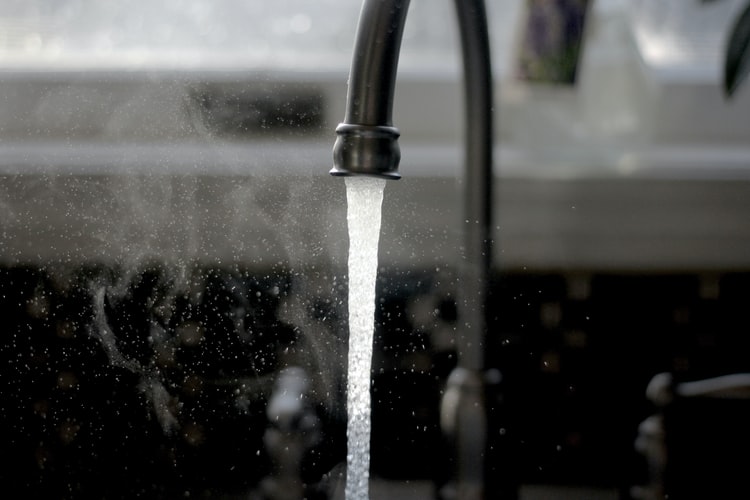
Matt Doll, Minnesota Environmental Partnership
If you live in an older home in Minnesota, it’s not a bad idea to find out if the service line that brings drinking water into your house is made of lead. There are more than 100,000 such service lines in Minnesota, serving about one in every twenty-five homes in the state.
Having a lead service line isn’t the end of the world, but it’s a hassle and a hazard. I have one in my own home in St. Paul (where you can conveniently look up the material of your service line). Our municipal water system also uses additives to water to help prevent pipe corrosion and form a protective film that contains the lead. I make a point to run my sink for a few minutes each morning and filter my drinking water.
Filters cost money, as does running the sink, but health problems due to lead are far more expensive: lead exposure can contribute to a wide variety of issues like infertility, pain, and dementia. Children are especially vulnerable as even low levels of lead exposure can harm a child’s mental development. Lead is much more harmful to children than adults because it can affect children’s developing nerves and brains.There are some treatments for lead poisoning, but they’re not surefire – an ounce of prevention is worth many pounds of cure.
Sadly, it’s all too common for Minnesotans to be unaware the water they drink may be at risk from these aging pipes. To help shine a spotlight on this problem, MEP worked with 52 households in Duluth to get their water tested for lead, and to get them filters if needed. We found that two-thirds had detectable levels of lead, which set off alarm bells for us – there is no safe level of lead, after all. Ten homes had lead levels above the new EPA action level, an especially dangerous level.
Meanwhile, many homes with lead service lines haven’t been recently tested, so we don’t know how corroded their pipes may be. That begs the disturbing question: how many lives have been permanently harmed by this invisible health threat?
How we got here
For a long time, lead pipes were all too common in housing construction- after all, lead’s easy to bend into shape and is reasonably sturdy. We know now, of course, that lead is poisonous, and that eventually, lead pipes tend to degrade and release lead into the water they carry.
Still, as with lead paint and lead gasoline (among the worst human-caused health threats in history), it took a frustratingly long time to phase these pipes out, with lead pipes still being allowed in U.S. building codes until the 1980s. And while these bans have gone a long way toward protecting people from lead, the 100,000 lead service lines in Minnesota, along with countless more across the nation, are still there.
These service lines can’t be fixed or retrofitted, only removed and replaced. Because service lines often consist of both a publicly- and privately-owned segment, that replacement can be both complicated and expensive. For an individual family, it means thousands of dollars, too much for many budgets.
These service lines are often concentrated in low-income areas and communities of color, where resources to replace the pipes are in short supply. This cost barrier prevents countless families from protecting their health and reducing their lead exposure, which in turn leads to higher health costs and ripple effects on communities. In the long run, leaving these pipes alone costs more than replacing them.
How we move forward
In the past few years, there’s been an increased awareness of this problem and heightened energy behind fixing it at multiple levels of government. The Bipartisan Infrastructure Law of 2021 sent $15 billion for communities to replace these service lines. This includes approximately $200 million for Minnesota over the next 5 years. Roughly half of that amount comes in as grants or forgivable loans and the other half as low-interest loans.
Communities are taking the federal government up on its offer. St. Paul Regional Water Services, which as mentioned makes its lead information widely available, has a ten-year plan to remove and replace all lead service lines in its area at no cost to the private property owners.
Right now, the Minnesota Legislature is working to take care of the rest, building on and accelerating on these federal and local efforts. The bill HF 24, authored by Representative Sydney Jordan, and its companion bill SF 30, authored by Senator Jen McEwen, would set up a statewide ten-year program for lead service line replacement at no cost to residents. It would start with an immediate inventory of all lead service lines in the state while moving swiftly into replacing these pipes.
MEP strongly supports this legislation – and its previous iterations that we helped craft – because we believe all Minnesotans deserve clean, healthy water, from the lakes and rivers near their homes to the water flowing from their kitchen sink. If this bill passes, hundreds of thousands of Minnesotans will finally be able to breathe easier when they turn on their tap.
How you can help: Use our action system to contact your lawmakers in support of HF 24 and SF 30.
For previous columns, visit mepartnership.org/category/blog/. If you would like to reblog or republish this column, you may do so for free – simply contact the author